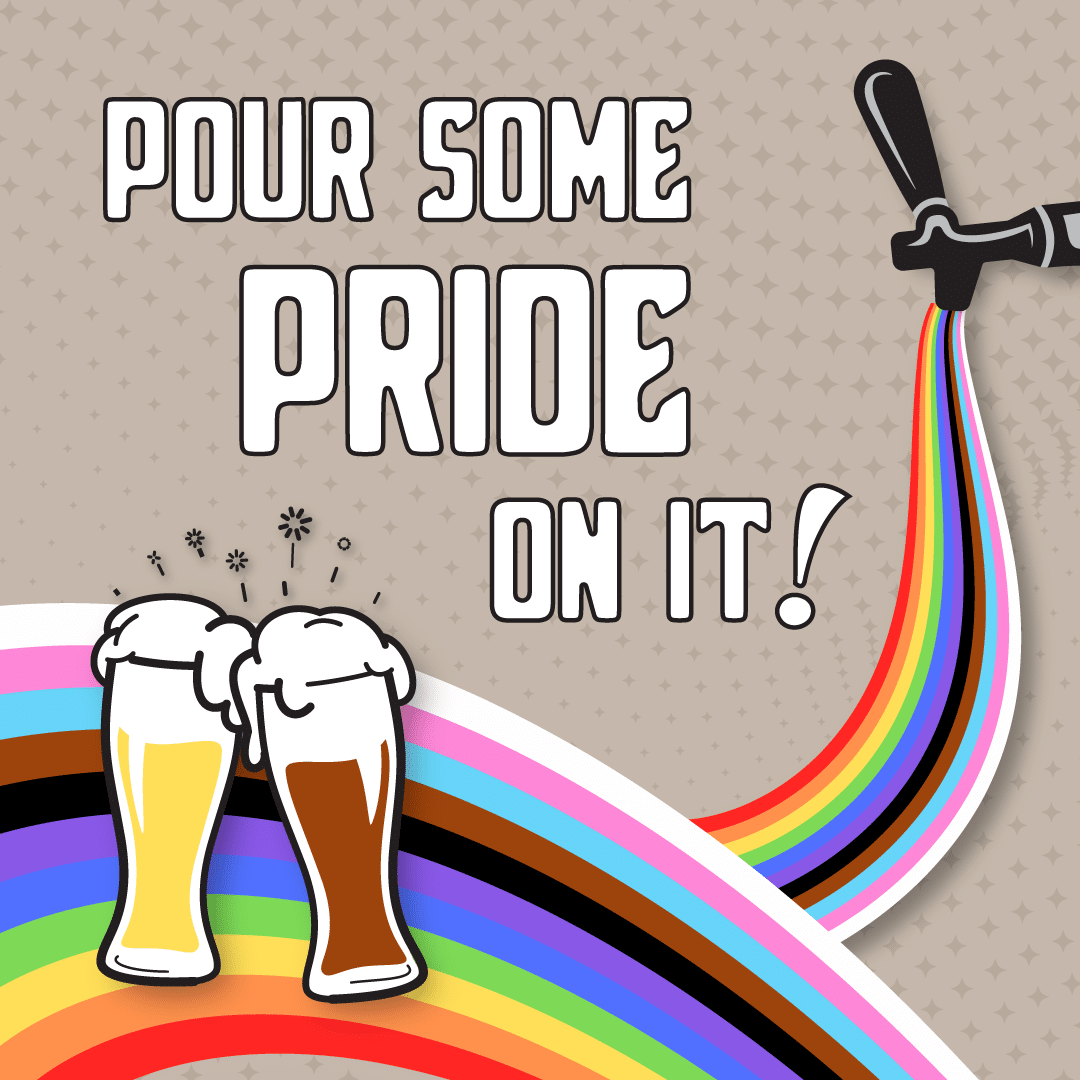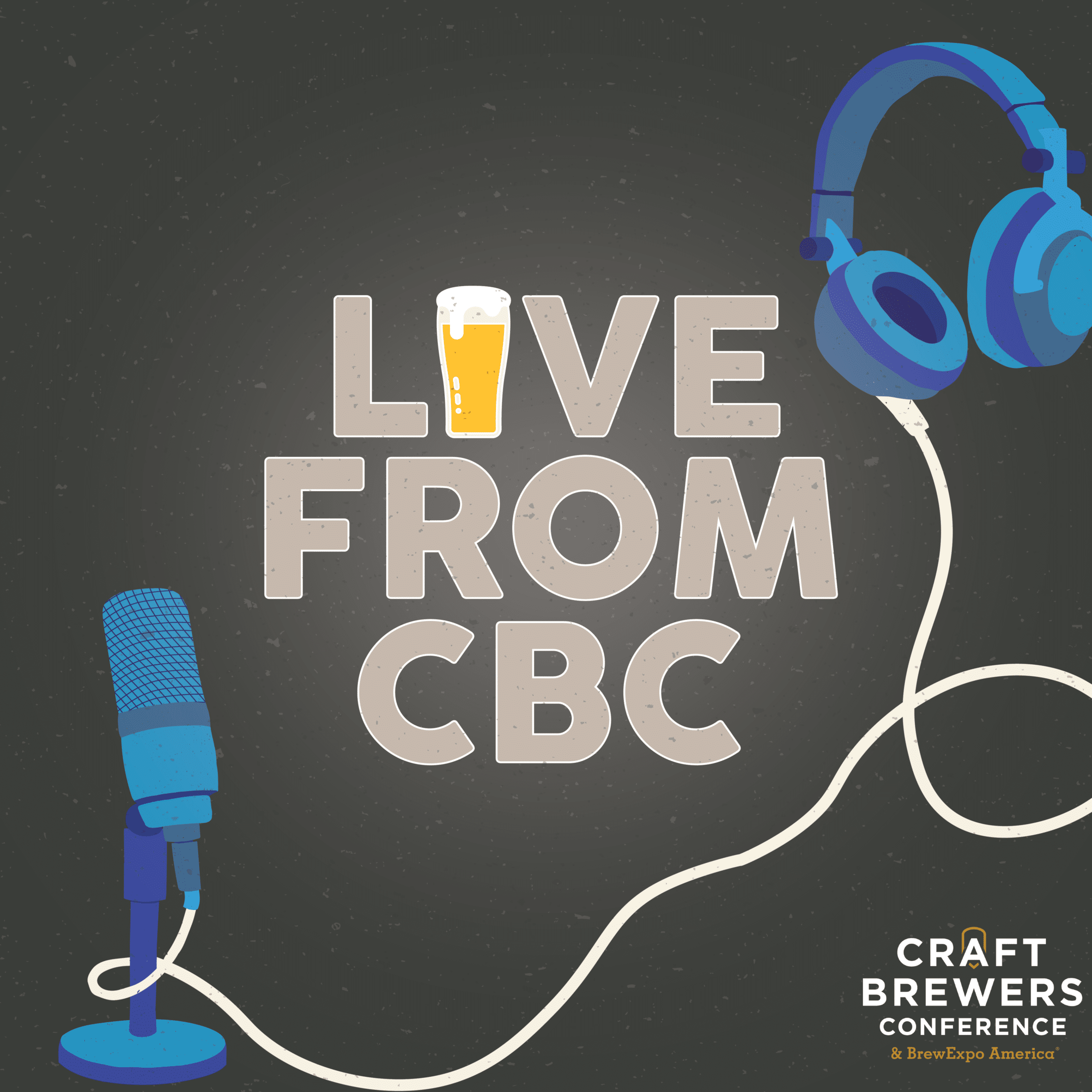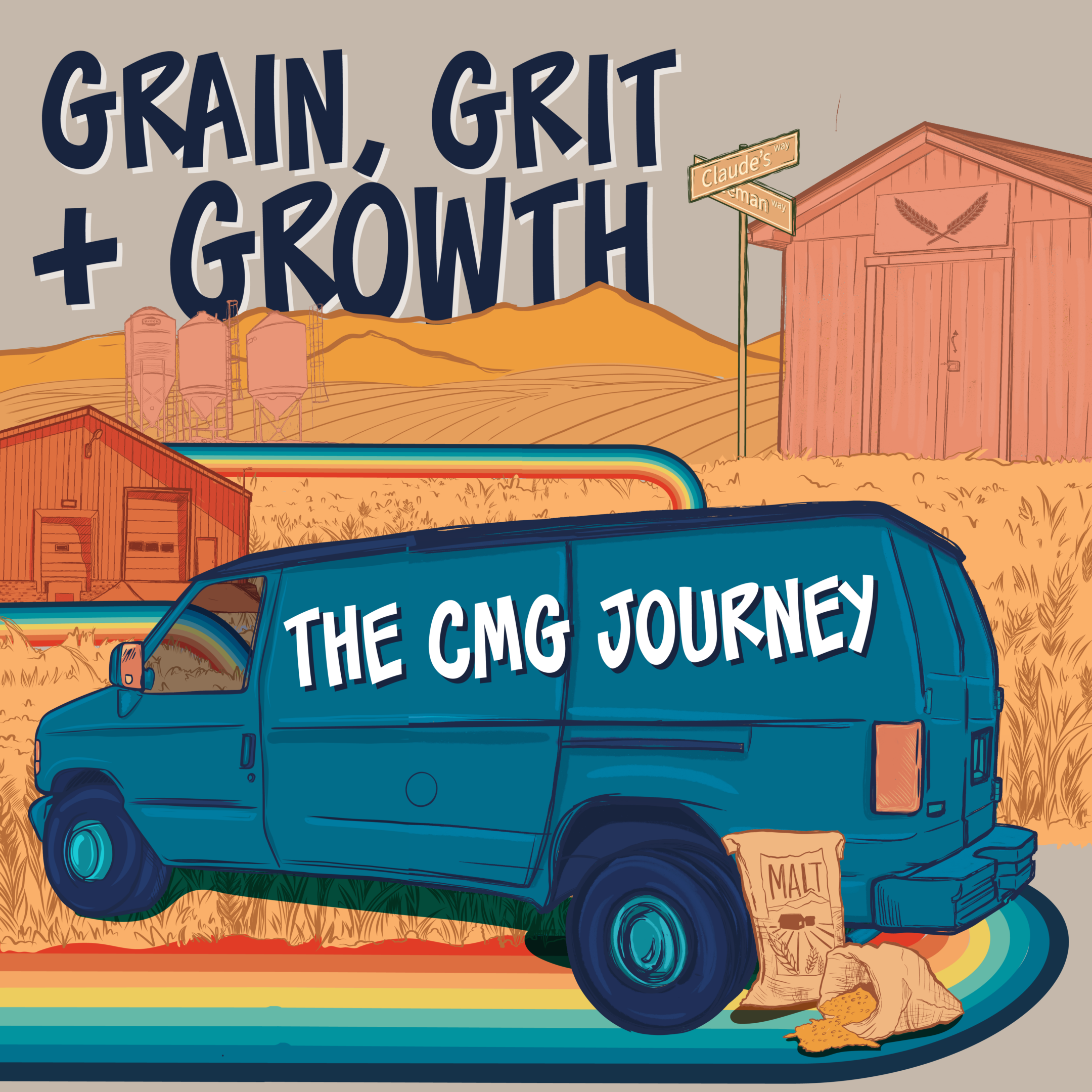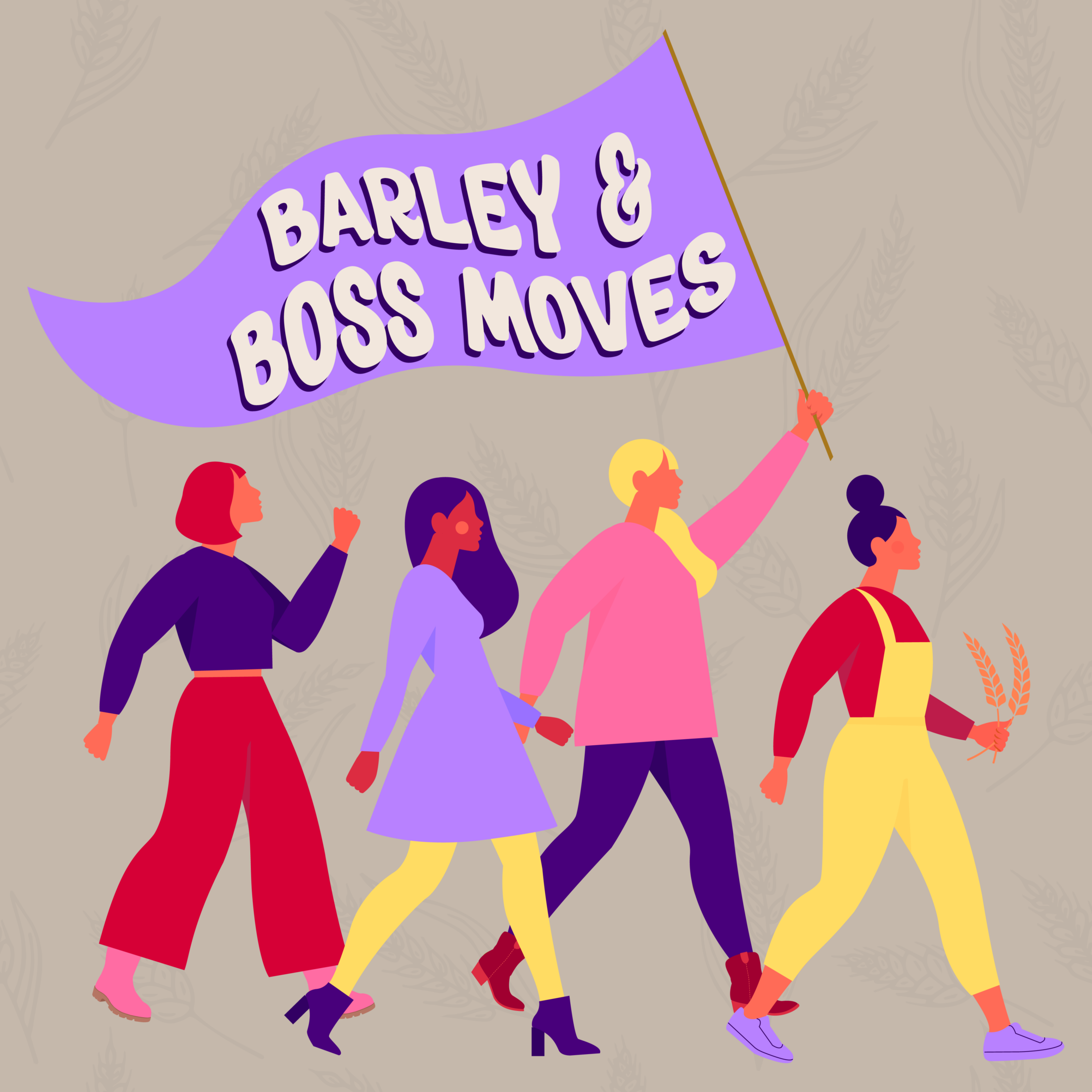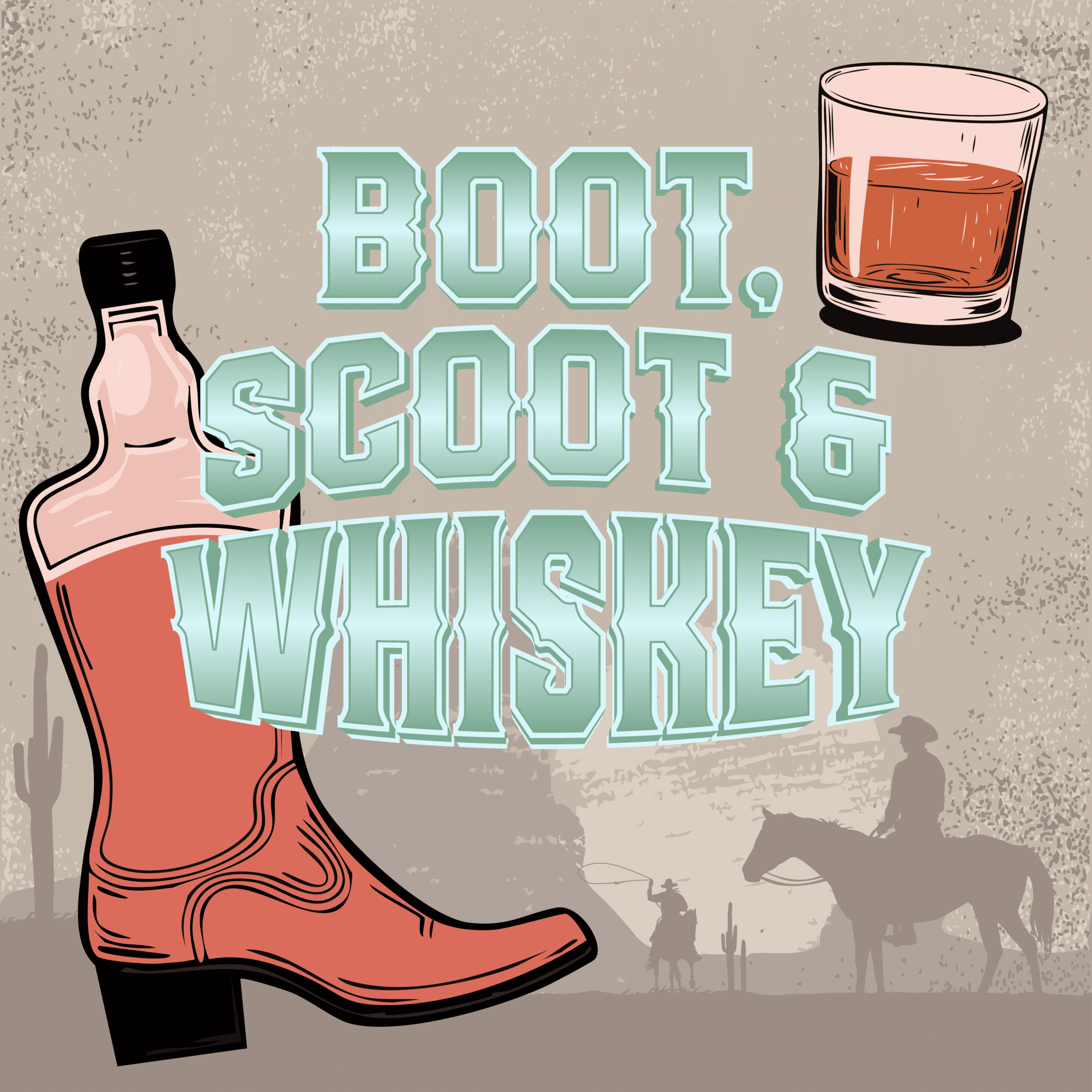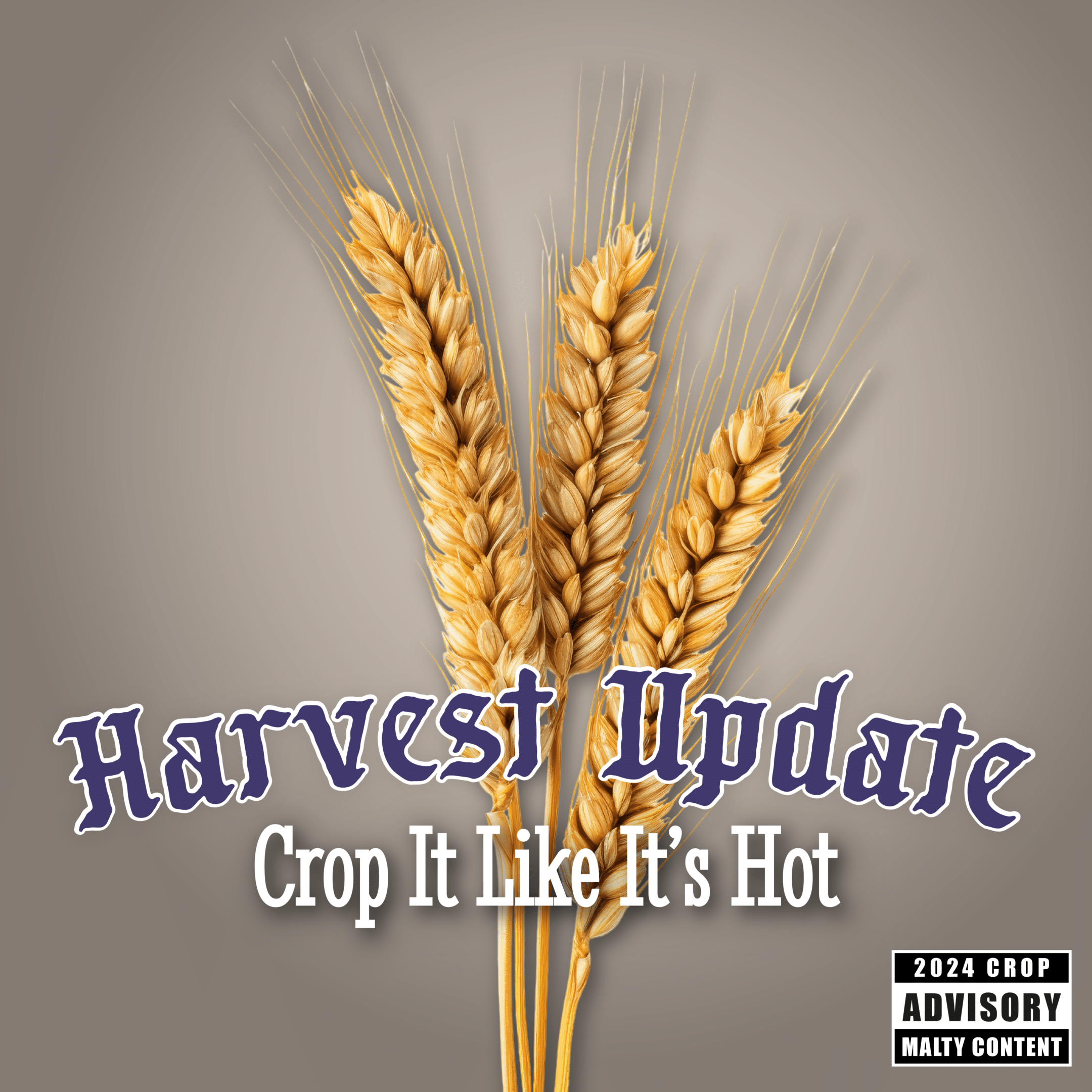
PODCAST GUESTS
Bart Whipple
Bart Whipple was a beer enthusiast and drawn to what Sierra Nevada was doing over thirty-five years ago when he applied for a job in the bottle shop. Perseverance for achievement and long-term endurance for the ever-changing craft brewing industry has paid off as Bart has worked his way up to the position of Assistant Brewmaster – Supply Chain Manager, Brewing Raw Materials. When not at the brewery, Bart enjoys fishing and the outdoors.
Dustin Camphouse
Dustin Camphouse is an Experienced Field Representative with a history of working in the malt barley industry. Currently, he assists with contracting barley and wheat to be used for Great Western Malting. Also, manages logistics of delivering small grains in a “just in time” environment utilizing 8-14 hopper bottom trucks and railroad capabilities.
EPISODE 8: AT THE TABLE WITH SIERRA NEVADA
PODCAST HOST:
TOBY TUCKER – DIRECTOR OF SALES, COUNTRY MALT GROUP
GUESTS:
BART WHIPPLE – ASSISTANT BREWMASTER – SUPPLY CHAIN MANAGER, BREWING RAW MATERIALS, SIERRA NEVADA
DUSTIN CAMPHOUSE – GRAIN FIELD REPRESENTATIVE, GREAT WESTERN MALTING
Key Points From This Episode:
- The story of how Bart got into craft beer and landed a spot at Sierra Nevada 36 years ago.
- What it is like buying the raw ingredients and having to present them to the brewers.
- Hear about Bart’s ability to determine the quality of malt just by opening the railcar.
- Their processes for checking the quality of a load and why you have to trust your suppliers.
- What smaller breweries can do to ensure that they are sourcing good quality malt.
- How malt quality and consistency have changed over time and how Sierra Nevada maintains its standard.
- The outreach program they launched to help the victims of the California wildfires.
- Learn about Sierra Nevada’s commitment to environmental sustainability.
- Bart talks about Hazy Little Thing – their hop-forward pale ale that became the benchmark.
- The shift toward session and non-alcoholic beers and what Bart likes to drink nowadays.
Transcript - At the Table with Sierra Nevada
SEASON 1, EPISODE 8
[AT THE TABLE WITH SIERRA NEVADA]
Host: Toby Tucker, Country Malt Group
Guest: Bart Whipple, Sierra Nevada
TT: All right, welcome to another episode of The BrewDeck, starting right now. I’m your host Toby Tucker. We all know here, well, maybe some people don’t know but I am based in Texas and it is cold right now but there’s the old saying that if you don’t like the weather in Texas, just wait a day. Well, it’s a real indication of when the holidays are right around the corner when it starts getting cold, and here, it’s probably 45 degrees which I know for a lot of northerners, 45 degrees is, feel like shorts weather, but typically down here there’s a trigger that goes off in my brain.
Letting me know that it’s holiday season. The other indication is when the elf on the shelf mysteriously shows up scaring the crap out of me somewhere in the house and for those parents that know what the elf in the shelf is. The elf in the shelf hasn’t showed up yet but all day I felt like a kid who can’t sleep on Christmas even because I have a very special guest today. I want to welcome Bart Whipple, assistant brewmaster supply chain manager, brewing in raw materials at the one and only Sierra Nevada.
[INTERVIEW]
[0:01:23.3] TT: Bart, how’s it going buddy?
[0:01:24.9] BW: Very good Toby, how about yourself?
[0:01:28.0] TT: Fantastic. I got to say, I’m super impressed with whoever put this interview together, very excited to have you, and kind of like a kid in a candy store here. Thanks for joining us.
[0:01:40.7] BW: Anytime.
[0:01:43.2] TT: I don’t really need to say a whole lot about Sierra Nevada and kind of the scene and who they are, I think most of our listeners know of Sierra Nevada and probably got into the craft beer scene as far as enjoying a beverage or two, specifically in the pale ale but you guys have been around a long time and really seen the ups and downs of the craft movement if you will but tell me a little bit about yourself, how you got into brewing with how you arrived to work for Sierra Nevada.
[0:02:12.7] BW: Well, I’ve always had a keen interest in beer, starting from when I was young and stealing beers out of my dad’s refrigerator through – I can say this now, because of the statute of limitations is gone through high school and got into trying different beers that were available back then which obviously there weren’t the choices nowadays but always have liked beer, I wasn’t doing anything around the time that I was looking for a job and happen to see Sierra Nevada was looking for someone to work in the bottle shop and do deliveries.
That was my first job at Sierra. I think they hired me because I was fairly clean-cut and looked like I fit in and so I started doing that and then a year later, had the opportunity to begin brewing and learning more about how beer is made, everything that I could learn about beer, I tried to do when I started brewing and I did that for about 27 years or so and just recently moved over into the supply chain to buy the ingredients now.
[0:03:27.5] TT: If I can do the math here, I’m not very good at math, so it’s almost 30 years in Sierra Nevada?
[0:03:33.1] BW: I left out a few things, I’m running up on about 36 years here come April.
[0:03:39.5] TT: Gosh, fantastic. I know you still, you mentioned fairly clean-cut, you’re still fairly clean cut.
[0:03:46.5] BW: For the most part yeah.
[0:03:48.3] TT: This COVID thing just – it’s like everybody, I forget where my razor is and you know, half the time just don’t get out of my underwear and it’s –
[0:03:58.3] BW: Yeah, I come into the office most every day so I have to look somewhat presentable but I’m not as focused on my appearances shall we say.
[0:04:07.6] TT: Yeah.
[0:04:08.3] BW: We don’t have visitors so –
[0:04:11.6] TT: No, again, fantastic to talk to you and you’ve been around Sierra for quite some time and you and I have ran into each other on several occasions, it’s been a while. As the move from the brewery operations side to the raw ingredients, do you find yourself going out and sourcing ingredients and then kind of showing them to your brewers say, here what we’re working with and you’re going to get mixed emotions whether they like your decision or not?
[0:04:43.0] BW: I’ve bought brewing raw materials for many years as part of my duties. Now, being in the supply chain role, having to present those to people that are actually using them. They like to blame the sources of brewhouse problems on the raw materials.
[0:05:02.8] TT: Not on their screwups, huh?
[0:05:05.2] BW: Not on equipment problems or other things. I deal with that quite often.
[0:05:12.2] TT: You quickly speed walking through the brewery to go to your office every day?
[0:05:17.1] BW: Yes.
[0:05:18.5] TT: Well –
[0:05:19.9] BW: We haven’t had that problem, so it’s all good.
[0:05:22.9] TT: That’s fantastic, Well, I don’t want to pat you on the backs here, I think one of the reasons you probably guys have – you guys have probably not have a whole lot of problems is because we like to think it’s because we are one of your chosen suppliers of barley malt and unmated wheat. Again, you probably are utilizing several other suppliers and for that, we appreciate you all’s business. I’ve heard some stories and this could be just hearsay here but you’re sort of like a bloodhound when it comes to determining malt quality specifically like opening a railcar and using your senses and stuff like this. Tell me what’s going on when you’re opening up.
Obviously, let me back up, you guys for a lot of material take rail cars, large quantities, a lot of folks on the craft side that we also provide ingredients too, doing a pallet or two at a time of 50, 55-pound sacks but tell me about this ability you have that I heard of to determined quality just by opening a railcar and looking at it.
[0:06:21.0] BW: Well, when you get up on the railcar and you’re opening that top hatch, when you get this big puff of aroma coming out of there, the nice maltiness of it, you can look and just the smell will tell you a lot. We have opened some rail cars and they had gotten wet for some reason on the way and you could immediately just smell that it’s not how it should be with a little bit of mustiness with that aroma factor and then grabbing some and having a chew.
Getting all those flavors along with that aroma. You can just tell when something is nice and when something is a little bit off. At least I do.
[0:07:15.3] TT: When you’re doing that, are your senses “the lab” or do you guys actually take a piece of that delivery and do some quick tests on it before accepting a load?
[0:07:23.9] BW: We do a lot of just the organoleptic chewing, we try to take it into our sensory department and you know, have more eyes and mouths on it just to get more people involved, I’m comfortable with what I know and find but it’s always good to get other opinions so we do that. We will do congress mashes on occasion just to especially during the change of crop years and we do a lot of you know, inspections, not so much where we’re taking it and running lab test on it. We don’t really do that.
[0:08:04.7] TT: You spend, obviously have a lot of faith on the analysis that’s coming from the maltsters, which is specifically talk about the attributes of the malt that’s being sent to you, right?
[0:08:14.8] BW: Yes, we look at every analysis for every piece of malt that comes in and if we look at that and find that we might not agree or something seems to be a little bit off, we’ll do a deep dive then but you know, you have to trust your suppliers to do what they’re doing and to feed you the numbers. If you don’t trust your suppliers, you should probably not use them.
[0:08:41.6] TT: Yeah, no. I agree. As far as a lot smaller scale for some of the customer base that we have and others that are maybe being on a three, five, or 10 barrel system that deal in those 25 KG bags, what would you suggest to them or do you have any pointers as far as inbounding raw materials, specifically on the grain and barley malt side as they look ant chew and feel, would you say that it should be similar on a smaller scale for them too?
[0:09:14.6] BW: Yeah, it truly is. I mean, when you pop open a bag, you know, you should be smelling and just looking at it, just the brightness color of the malt, is it what you’re expecting, you smell or see anything off but it doesn’t matter what size a package it comes in, you should be able to inspect it or get elliptically any time. If you want to take it then to the lab to do other things, then that certainly is something that can be done as well.
[0:09:43.1] TT: Sure. Going back to kind of that waft of the malt when you open up the railcar, is there a specific malt that you just absolutely love taking a whiff of or doing a chew test on? I know for me, I specifically – I love certain crystal malts, it’s almost like you know, I could put it in a bowl and pour some milk on there and have a nice breakfast but is there something that stands out for you?
[0:10:08.2] BW: Well, for me, it’s pale malt. I really like mare otter for whatever reason, we don’t get rail cars of it but we have gotten totes and bags and I just like floor malt, the smell, the flavor, that’s one of my favorites, the crystal malts too as you say, you know, chewing those and the nutty berry flavors that you get, those are very nice as well.
[0:10:34.5] TT: Yeah, absolutely. From Sierra Nevada’s perspective over the past 40 years, how has malt quality and consistency changed that you’ve seen especially here in North America?
[0:10:47.7] BW: Wow, back when I first started brewing, we were getting great western malt out of Los Angeles which is very far away from the growing area as everyone should know. I think the biggest change is new technology moving alt houses closer to where things are grown and the consistency of a lot more technology helps, it’s less hands-on which in some respects is maybe not good but the consistency is much better with like the larger, more modern malt houses for sure.
[0:11:28.8] TT: Yeah, I would agree, I’ve seen in my slim eight years, I’ve seen quite a bit of change. You’ve gotten, I’m assuming you’ve gotten pretty hands-on and been able to go and travel and kind of seen it the tear-off if you will and kind of run your hands through the barley that you guys as a brewer will ultimately be using. Do you have any fun memories or experiences of somewhere in particular that you’ve been? That you’ve been able to walk the ground and see the product actually coming out of the ground?
[0:12:00.5] BW: Anytime you can get out in the field and walk barley is just a neat thing, just to see the heads growing and to know that okay, this field will be in what we’re going to brew with. Those are kind of magical moments I guess, they’re kind of fun just to see your raw material outgrowing.
[0:12:22.2] TT: Yeah, I 100% agree. Are you guys doing anything interesting as far as maybe on the small scale or pilot batches that you guys are pretty excited about?
[0:12:34.4] BW: We’re always – have something in the pipeline, there’s somewhere we’re actually focusing a lot right now on a non-beer thing which is probably don’t want to talk about here but kombucha, we’re looking into things like that and some other beyond beer projects but as far as beers, we’re churning out all kinds of prototypes, it takes us a long time to start a project, brew all the different iterations of it until we think it’s ready to go.
I say, we have a full pipeline, it’s just now choosing what our sales and marketing team would like to push forward with.
[0:13:17.0] TT: That’s great. Jumping back over to the malt side, you guys made the decision to go east if you will in a big way from Chico out to North Carolina. When you look at consistency as far as the raw materials, was it important for you guys to utilize the same suppliers all be it, it may be a bit further from your new facility or how much complications or challenge did you have keeping consistency of product at both breweries and you know I maybe speaking out and maybe you guys do different beers at each facility?
[0:13:56.5] BW: Well, we do try to maintain consistency with all of our raw materials for brewing. We use the same malts, we use the same hops. We try to coordinate between breweries, which lots of hops and what malts are in beers so that we do maintain a consistence and you know, it’s a bit of a juggle sometimes but that is something we really try to focus on.
[0:14:23.9] TT: Yeah, it seems like you said, a bit of juggling act and definitely quite a bit of communication probably needs to happen.
[0:14:30.6] BW: A lot of communication. It is very hard to work with someone three thousand miles away and three hours difference. So it is a lot of talking on teams, meetings or by the phone or however we can talk just because you can’t walk across the hallway and chat people up.
[0:14:50.4] TT: Yeah, absolutely. One of the things that has always stood out to me and I think our listeners as well as Sierra Nevada leadership has always been hands-on. Ken Grossman seems to be always involved in anything and everything Sierra Nevada and all of the leadership that I’ve had the opportunity to meet is the same way. You know one of the things that I’ve always been impressed with in my time spent with dealing with you guys is the contribution made to several different community organizations and then really stepping up in the brewing world for the needs of disasters, etcetera.
Specifically the wildfires out in California that we were faced with, specifically you have paradise, California is right next to you guys in Chico hit really hard by the campfire. You know Sierra Nevada quickly mobilized the craft brewing community to help raise money for the victims of that fire. You know I am sure you remember that well. Can you tell us a little bit more about that program?
[0:15:50.9] BW: That was an amazing thing to happen. We were here, the town was basically burnt off the map and we had people that lived up there, who had lost everything as well and it was just a terrible time as people started collecting their senses. Ken opened up his store to give away clothing to people who basically ran away with what was on their back and I mean he just cooked and had the pub fire up to cook meals for people who had nowhere to go and that part was amazing.
Then he came up with an idea, we thought we would brew a beer and sell it and donate the proceeds and that started out locally a little bit and then suppliers started contacting us, other breweries that wanted to help. It just turned into a huge relief effort that was, I don’t know, it boggles my mind. It was something special.
[0:16:59.9] TT: Yeah, absolutely. I don’t want to speak out of terms but I think it ultimately raised more than $15 million. That was in combination and actually back up here but the folks at Sierra Nevada, you guys actually came up with an idea to help the rest of the brewers in North America also become involved by brewing a beer and then using the proceeds to go back towards the relief and I think there was more than 1500 breweries across US and Canada I believe that participated in this program. So it was really, really cool.
[0:17:35.5] BW: We had interest from outside the country, which was phenomenal. Yep, as I said it was intended to start just us, and then as more people heard about it and wanted to help, it exploded into this thing and suppliers like yourselves, Country Malt and Great Western stepped in to donate raw materials for this and it just kept on building and turned into what it was, which was something amazing.
[0:18:04.0] TT: Yeah, very, very impressive that a brewery of your size really gets in and assists, when they need to that’s really, really cool and ultimately Bart, it ended up with some assistance again in the Australian wildfires as well. I think they did something similar in Australia with a relief beer.
[0:18:24.1] BW: Yes, they did. It was kind of nice to see that kind of camaraderie jump across the ocean and help those folks too.
[0:18:33.3] TT: Yep, yeah absolutely. Along the lines of just kind of commitment and kind of what you guys do for the environment, tell me a little bit more about Sierra Nevada’s commitment to environmental sustainability? I’ve heard a lot about it.
[0:18:48.3] BW: Well, that is one of our key focuses to make great beer but to have a small environmental footprint as we can. We’ve installed solar panels, which at one point were the largest private solar panel facility in California but those rascals at Google didn’t like that. So they did more and then we were demoing hydrogen fuel cells for supplemental power and those worked but not as well as we were hoping. So we switched to micro turbans and we tried to run those off of waste or generated gas from our water treatment plant that gave off burnable gas.
We were capturing that and trying to use it. We reclaim heat wherever we can to preheat water. Recycling, we are working toward a zero, having zero waste to go to landfill. We are very close. We look everywhere we can to reduce things that can’t be reused, which is kind of why we went to railcars. It is better to move one rail car of malt than three or four truckloads to get those things off the road and use less petroleum. So that is a big focus about everything we do.
[0:20:19.2] TT: That’s really awesome. Really awesome the work you guys are doing and I am obviously curious of how that plays out and some of those initiatives sounds great. Switching gears here a little bit, Hazy Little Thing, let’s talk about that for a minute. So back when Cascade hops were somewhat new to the market, Sierra Nevada took the lead on making a hop-forward pale ale that became I would say the benchmark for pale ales for many years and still to this day.
When Hazy’s came into play, you guys did a ton of research to determine the ingredients and recipes for the beer now known as Hazy Little Thing. Obviously, I don’t expect you to give away any secrets here but can you talk about the oat malt factor and what it does for that beer on turbidity and mouthfeel, etcetera?
[0:21:07.3] BW: Sure. When Hazy’s first came out at a style, we kind of turned our backs on them. You know we didn’t do that Hazy of a beer except for our Weiss beer or something. We started to look into the biggest component was how to create stable haze not just blow a bunch of yeast in or whatever. So we started looking at oat malts, wheat malt, all of these things that we knew we could get haze with, reach out to Country Malt for some oats to start playing with.
We really have dug into the haze component with our RND lab and we still continue to do so. We don’t know any – well, we know something but we don’t know everything that we want to know there but those oats are a good part of that haze and a mouthfeel that you know, it’s always great with that style of beer. We still have a lot of work to do. I don’t really like to talk too much about it just because we are in the midst of our studies still but we do have a few secrets we don’t want to give away.
[0:22:20.5] TT: I understand. I don’t blame you.
[0:22:24.2] BW: The oats do provide that nice mouthfeel in the beer though. Just softness and a nice mouthfeel.
[0:22:31.1] TT: It is a fantastic beer. Whatever you’re doing, you’re doing a good job. I don’t know if it needs a whole lot of tweaking but I’ll leave that up to you professionals.
[0:22:40.4] BW: You know we always think it does so.
[0:22:42.4] TT: Right speaking of Hazy’s kind of the topic of trends, I know when Hazy said it was just an explosion of I got to make one, I got make one, I got to drink one, I got to have one, what do you think the next big trend will be in the beer world?
[0:22:59.1] BW: Quite honestly, I think session beers are, there is already kind of a lean that way. I think that folks nowadays want to drink something they can have a few of with friends and not yet completely obliterated after drinking two with, you know, the hot flavor but not a lot of the bitterness.
[0:23:22.3] TT: Yeah, I don’t disagree. You know there is along the same lines there’s some breweries out there that are making impeccable non-alcoholic beers. We are very, very session below alcohol beers that will stand up against many of the four or five, you know 6% beers. There is some very talented people out there doing some great things.
[0:23:42.5] BW: Yeah, non-alcoholic I think is another one that’s on the rise.
[0:23:46.9] TT: I agree. I agree. Well, I know you’ve got an extremely tough job. We talk a little bit about kind of your day before you came on the show here but you’ve got a lot of tough choices you make every day but what about the choices when it comes to what beer you’re drinking? You know, pint, can, bottle, what’s your go-to? What are you enjoying right now for a personal or favorite beer or beer style?
[0:24:12.6] BW: Wow that is like asking me who my favorite child is. I like a lot of different beers or we’re just trying a table beer that we are playing with and I don’t know. I have to say right now I am mostly enjoying sours and dark beers. It might be sacrilegious to say this, I’m kind of over IPA’s right now looking at barreled aged and just some other nice styles that I didn’t pay attention to for a while.
[0:24:47.7] TT: It’s that time of the year for the barrel-aged. I am a fan myself. So I don’t know when this thing will air for the general audience but I was told that Ken Grossman has a birthday coming up here on November and that we shall cheers for his birthday. I don’t have a beer with me but you can believe that after this call I am going to get one but we can throw a cheers up for Mr. Ken Grossman of Sierra Nevada.
[0:25:15.4] BW: Yeah, I have to give him a shout out and you know, a pretty happy birthday and cheers.
[0:25:21.1] TT: Yeah, absolutely. Here we go, cheers. Bart, hey thanks so much for coming on with us. Of note, Dustin Camphouse from Great Western Malting, I’m probably could tell you may have met, he’s going to be the next guest on the podcast and he is going to tell us about his work specifically with growers and the intake of grain into the malt house. So they are giving you a big hello from the crew up there and they’re looking forward to having you up and doing some more of that walking around in the fields and hosting you up there at Great Western Malting.
[0:25:53.3] BW: Well, back at them. I hope to get up there in the coming year and resume our business and wave goodbye to this year for sure.
[0:26:03.7] TT: Oh I am ready for that, yeah. All right Bart, thanks so much for joining us. It’s been a real pleasure chatting with you and I hope you have a fantastic rest of the week and I look forward to chatting with you here coming sooner rather than later and tell the crew up at Sierra Nevada we said hello and I appreciate your business.
[0:26:21.5] BW: We’ll do. You take care.
[0:26:23.2] TT: Thanks, Bart.
[END]
